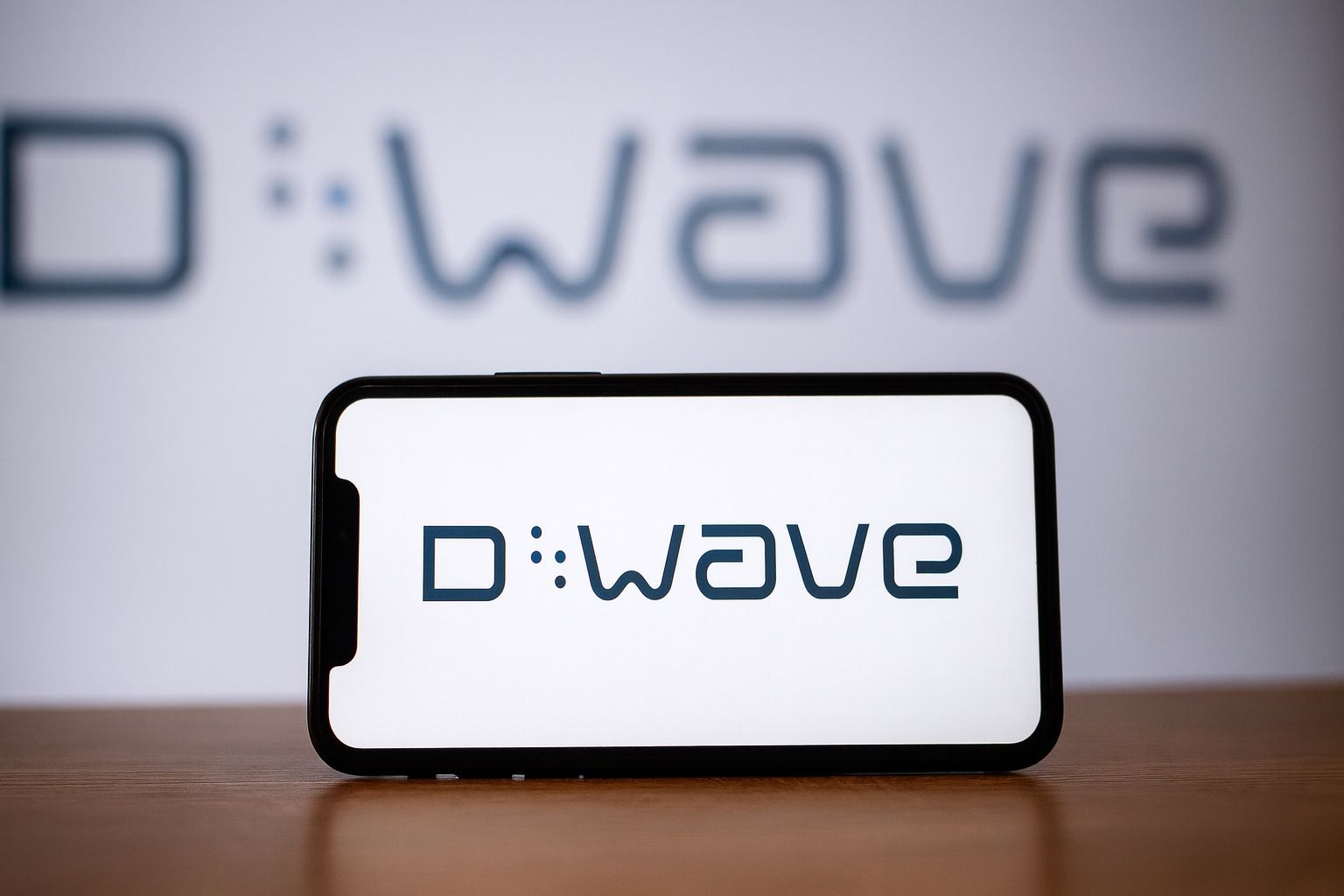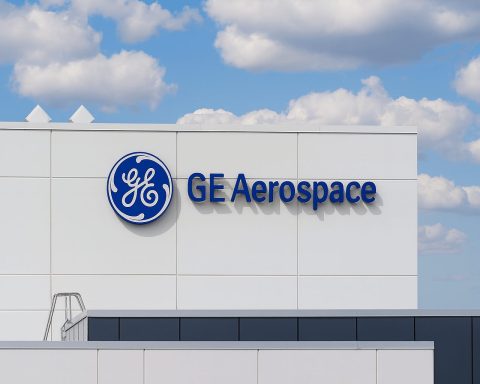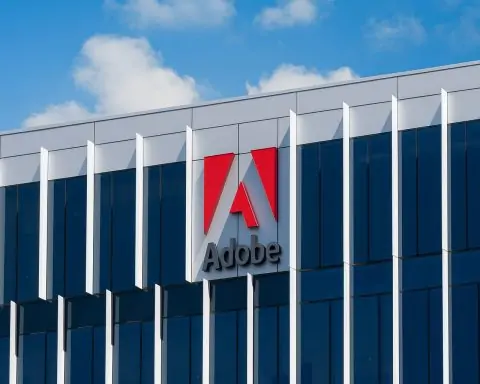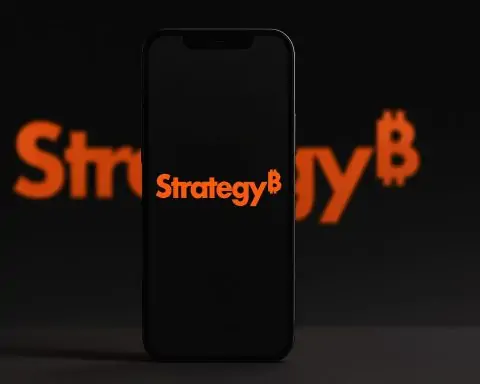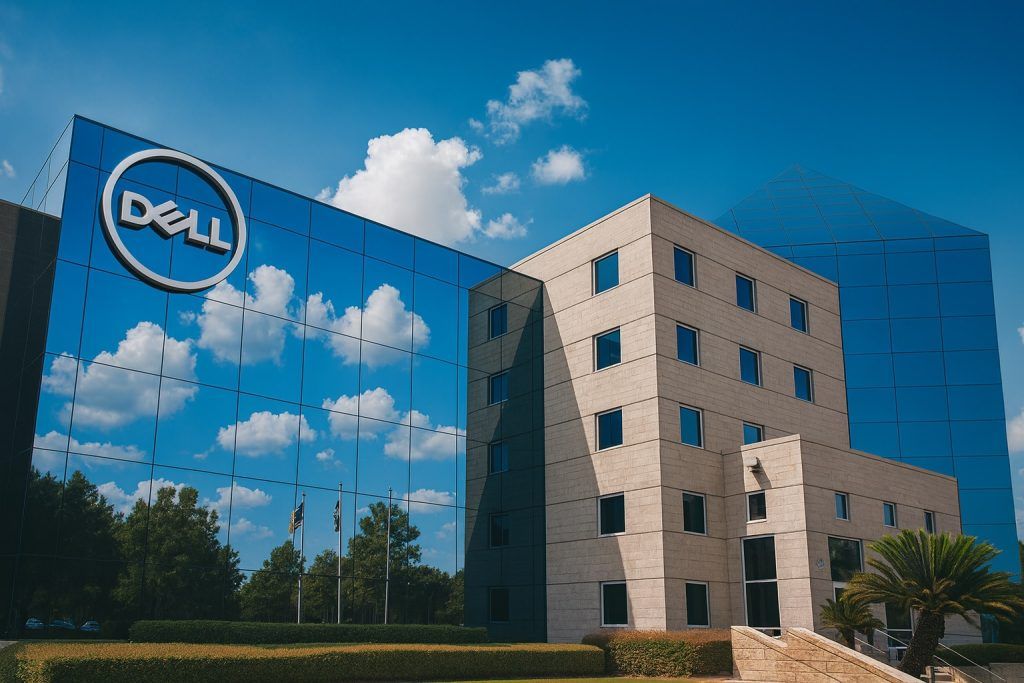- Spectacular Rally: D-Wave Quantum’s stock has exploded in 2025, hitting all-time highs around $33 per share in early October (up ~289% year-to-date and over 3,000% from a year ago) [1]. A year ago, QBTS traded near $1; today its market capitalization hovers around $10–11 billion [2] – an astonishing ~400× its annual revenue, reflecting euphoria around quantum computing.
- Thin Fundamentals vs. Big Valuation: The stock’s rise far outpaces D-Wave’s financials. Q2 2025 revenue was just $3.1 million (up 42% YoY) – only ~$18 million in the first half [3] – while the GAAP net loss hit $167 million [4]. D-Wave raised $400 million in mid-2025, boosting its cash reserves to a hefty $819 million [5]. This war chest gives a multi-year runway, but at ~$12 billion market cap the company trades at 400+ times 2025 sales, an extreme valuation hinged on future growth [6].
- Quantum Breakthroughs Fueling Hype: D-Wave’s 2025 string of technical milestones and partnerships stoked investor enthusiasm. It launched its new Advantage2 system – a 5,000+ qubit quantum annealer promising up to 400× speedups on certain optimization problems [7]. A pilot project with North Wales Police showcased real-world impact: D-Wave’s hybrid quantum solver cut a complex emergency response planning problem from “four months to four minutes,” slashing average response times ~50% [8]. CEO Alan Baratz touted this as proof that “hybrid-quantum computing can offer the speed, precision and intelligence needed… [and] is beginning to show real-world potential” [9]. Such concrete use cases – alongside partnerships with NASA’s JPL, Yonsei University (Korea), and big firms (E.ON, GE, Nikon, etc.) – have bolstered the narrative that D-Wave is converting its decades of R&D into practical value [10].
- Analyst Buzz… and Caution: Wall Street coverage is surprisingly bullish for such an early-stage tech. 11 out of 12 analysts rate QBTS a “Buy,” and firms recently raised price targets into the high-$20s/low-$30s [11]. B. Riley Securities, for example, hiked its target to $33 after D-Wave’s rapid technical progress. However, current optimism isn’t unanimous: the average 12-month target is only ~$22 – ~40% below the current price [12] – reflecting worries that the stock’s fundamentals don’t justify its meteoric rise. Market observers warn D-Wave’s surge is “moving purely on momentum” and could reverse quickly without clear profit traction [13]. In short, D-Wave embodies both the promise and peril of the 2025 quantum stock frenzy.
- Volatile Trading & Speculation Signs: D-Wave’s stock has become extremely volatile amid heavy trading. On Oct 3 alone, volume spiked to ~77 million shares as the stock jumped ~12% [14]. Options activity has been feverish – on Oct 6–7, hundreds of thousands of contracts traded each day, with calls outnumbering puts (put/call ratio ~0.6) as bullish traders piled in [15]. Implied volatility has surged (~139% IV^30), implying huge daily swings [16]. Notably, a new 2× short ETF (NYSE: QBTZ) just launched on Oct 7 to let bearish investors bet against D-Wave [17]. The fact that a leveraged inverse ETF was created for a small-cap stock up 2600% highlights how speculative and polarized the sentiment has become.
Above sources in brackets. The surge in D-Wave Quantum’s stock price has captivated markets, but is it a quantum leap forward for investors or a bubble waiting to burst? The in-depth report below examines what’s driving the rally, the company’s progress and challenges, and whether this “quantum gold rush” can last.
A 2025 Tech Stock Phenomenon: D-Wave’s Astronomic Rise
Few stocks have soared like D-Wave Quantum (NYSE: QBTS) in 2025. After languishing as a penny stock in late 2024, D-Wave’s share price went parabolic this year – gaining nearly +300% year-to-date and over +3,000% since last October [18]. On October 3, 2025, the stock hit a record intraday high around $33 (closing at $32.70) [19]. To put that in perspective, a $1,000 investment a year ago would now be worth well over $30,000. Such exponential growth is virtually unheard of outside of the most speculative arenas (think cryptocurrency mania) [20], underscoring both the euphoria surrounding quantum technology and the risks of volatility that come with it.
What’s driving this quantum stock frenzy? In many ways, D-Wave has become the poster child of a broader 2025 run-up in quantum computing stocks. Investors, hungry for the “next big thing” after the AI boom, have latched onto quantum computing as a potentially transformative frontier – and D-Wave, along with peers like IonQ and Rigetti, saw its stock “multiply this year” amid surging optimism [21]. By early October, all major pure-play quantum firms were up hundreds or even thousands of percent year-over-year [22] [23]. This rally has been stoked by a steady drumbeat of positive headlines: breakthrough tech demos, new partnerships, government interest, and even macro tailwinds (e.g. speculation that Fed rate cuts could boost high-growth tech) [24] [25].
D-Wave in particular has benefited from a fear of missing out as it hit milestone after milestone. When the company hosted its “Qubits 2025” user conference in late September and showcased its latest quantum advancements, the stock jumped 19% in one day [26]. Similarly, news of any tangible progress or validation has sent shares surging – from high-profile endorsements (even Nvidia’s CEO called quantum computing at an “inflection point” this year [27]) to peer events (Rigetti’s early October announcement of $5.7 million in quantum computer sales set off a sector-wide rally [28] [29]).
Perhaps most importantly, D-Wave has given investors a growing sense that “the future is now” for quantum. The stock’s climb accelerated into Q4 2025 after D-Wave publicized real-world use cases and product releases that suggest quantum computing is moving out of the lab and into practical application. That narrative – that quantum tech is finally approaching an inflection point – has been a powerful driver of momentum buying.
However, this momentum works both ways. The trading action in QBTS has grown frenzied and at times disconnected from fundamentals. On October 3, volume topped 77 million shares (massively above normal) as technical indicators flashed “overbought” [30]. Some analysts have even speculated QBTS could hit the $40+ range imminently if the momentum persists [31]. But the speed of the ascent also raises the possibility of sharp pullbacks. The stock’s 52-week range spans from <$1 to nearly $40 [32], and intra-day swings of 10–20% have become common. The surge has clearly been fuelled by buzz and headlines as much as any concrete financial metric [33], making the ride exhilarating but perilous. As one market commentator bluntly put it, D-Wave’s gains at this stage are driven more by “speculation and momentum” than by current business results [34].
Hype Meets Reality: Breakthroughs Behind the Rally
Despite the frothy price action, D-Wave has given investors some legitimate things to cheer in 2025. The company – a pioneer in quantum computing since 1999 – used this year’s spotlight to demonstrate technical progress and real-world utility that were long in the making. These developments help explain why sentiment turned so bullish on D-Wave (even if they don’t fully justify the stock’s extreme valuation).
1. New 5,000+ Qubit Quantum Computer (Advantage2): In mid-2025, D-Wave launched its sixth-generation quantum annealing machine, dubbed Advantage2 [35]. This system boasts over 5,000 qubits (quantum bits) and significantly improved connectivity and coherence. It’s designed to tackle complex optimization problems – in areas like logistics, scheduling, routing, and material science – that are “beyond the reach of classical computers” [36]. Early tests indicate the Advantage2 can deliver up to 400× speedups on certain problems versus D-Wave’s prior model [37]. Essentially, it’s a major upgrade of D-Wave’s core tech, keeping the company at the cutting edge of quantum annealing (a specialized approach focused on optimization tasks).
The Advantage2 launch was a validation of D-Wave’s technical roadmap and decades of R&D. It also expanded the company’s commercial offerings – making a more powerful quantum system available via cloud access and potentially as on-premise installations. Investors took this as a bullish signal that D-Wave is continuing to innovate and “push the frontier” of practical quantum machines [38]. One analysis noted that this “legitimate advancement” in D-Wave’s technology attracted more customers and use cases, feeding the bullish narrative [39]. In short, Advantage2 gave credibility to the idea that D-Wave can deliver ever-more-capable quantum hardware, which in turn fueled speculation that revenue will ramp up in coming years.
2. Hybrid Quantum-AI Tools: Alongside new hardware, D-Wave rolled out software tools to broaden its appeal. In 2025 it introduced an open-source quantum AI toolkit integrating with popular machine learning frameworks like PyTorch [40]. This lets AI developers easily experiment with quantum computing within AI workflows. D-Wave even demonstrated using its quantum processors to generate simple images, as a proof-of-concept for quantum-assisted AI [41]. By positioning itself at the intersection of two hot fields – quantum computing and artificial intelligence – D-Wave tapped into extra hype. The notion of combining quantum with AI (often called “quantum AI”) has excited tech-savvy investors, and D-Wave’s efforts here signaled that it is not just a science project but potentially enabling next-gen applications [42]. This narrative of aligning with AI trends further catalyzed investor enthusiasm in 2025.
3. Real-World Pilot Success (North Wales Police): The most attention-grabbing headline came from an unlikely place: a police department in Wales. In late September, D-Wave and North Wales Police (NWP) announced results from a joint pilot project, showcasing a tangible benefit of D-Wave’s quantum technology in public safety. The project used D-Wave’s hybrid quantum-classical solver to optimize the deployment of police vehicles for emergency response. The outcome was striking: the quantum-enhanced solution found optimal patrol car placements so efficiently that it cut the planning time from 4 months to 4 minutes, and reduced average incident response times by nearly 50% [43] [44]. In other words, what used to take months of analysis could now be computed in minutes, potentially saving lives by getting officers to emergencies faster.
For D-Wave, this was a landmark proof-point. It’s one thing to theorize about quantum computing’s potential; it’s another to demonstrate it in the field. NWP officials indicated the approach could be scaled more broadly to improve public safety and reduce costs [45]. And for D-Wave, the PR value was enormous – this pilot offered a concrete answer to skeptics who ask, “Can quantum computing do anything useful today?” The news was widely covered and framed as “D-Wave Soars on Real-World Quantum Computer Significance” in headlines [46]. D-Wave’s CEO hailed the result as a “meaningful impact” example of hybrid quantum computing, saying it “delivered a faster, more accurate, and more efficient solution than classical methods,” cutting response times ~50% [47] [48]. This validation of practical value instantly strengthened D-Wave’s story – suggesting its tech isn’t just science fiction but can solve real problems today. It’s no coincidence the stock jumped to new highs in the days following this announcement [49].
4. Strategic Partnerships & Customers: D-Wave also spent 2025 forging partnerships and customer engagements that expand its reach globally. For instance, it inked a memorandum of understanding with Yonsei University and the city of Incheon in South Korea to potentially install an Advantage2 system there – which would be D-Wave’s first machine in that country [50]. The collaboration involves joint research and talent development, and signals international interest in buying D-Wave’s hardware (not just using its cloud service) [51]. D-Wave also partnered with NASA’s Jet Propulsion Lab (JPL) on advanced cryogenic chip packaging to help scale to 100,000-qubit systems in the future [52] – leveraging JPL’s expertise to overcome engineering hurdles for next-gen quantum processors.
On the commercial side, dozens of enterprises and institutions began experimenting with D-Wave’s tech. The company reported over 100 cumulative paying customers by mid-2025 [53]. This year it signed or expanded agreements with big names across industries: utility giant E.ON, energy firm GE Vernova, camera maker Nikon, telecoms NTT Data and NTT Docomo, electronics firm Sharp, the UK’s National Quantum Computing Centre, and more [54]. It even collaborated with Ford’s Turkey division on a project that cut vehicle production scheduling time by 85% using quantum optimization [55]. Each of these partnerships and pilots adds a potential reference case that D-Wave can point to, showing its quantum solutions have broad applicability. The steady stream of such announcements through 2025 kept reinforcing a bullish narrative: that D-Wave is beginning to convert its two decades of research into commercial traction. As one analyst noted, the company’s momentum in technology and deals makes the progress feel “real” and not just hype [56]. In effect, every new project or partnership helped sustain investors’ excitement that D-Wave could be a leader in the dawning quantum era.
In summary, D-Wave executed on multiple fronts this year – launching a next-gen machine, raising substantial funding, demonstrating real-world success, and expanding globally – all of which fed the investor frenzy. Each positive development created a “fear of missing out” wave, where traders did not want to be left behind if quantum computing truly is the “next internet” or “next AI.” This confluence of breakthroughs and optimism forms the backdrop of D-Wave’s stock surge. However, it’s crucial to note that most of these wins, while promising, are early-stage. The Advantage2 system just came out (customers are only beginning to adopt it), the Wales police project was a pilot (not a paying contract), and partnerships in places like Korea are exploratory MoUs. D-Wave still must translate this buzz into sustainable revenue growth. The market is pricing in years of success that have yet to materialize, which is why skeptics remain vocal even as the company’s story improves.
Financial Reality Check: Lofty Promise vs. Little Revenue
Amid the quantum hype, D-Wave’s fundamentals serve as a stark reality check. The company’s financial profile today looks nothing like a business that would normally command a $10+ billion valuation – underscoring how much of the stock’s price is based on future potential rather than present results.
Tiny Revenues, Rapid % Growth: D-Wave is still essentially a pre-commercial firm in terms of revenue. For the full year 2024, it generated only $8.8 million in sales [57]. 2025 is tracking higher – in H1 2025 D-Wave pulled in $18.1 million (versus ~$4.6M in H1 2024) [58], and analysts expect about $24–25 million for full-year 2025 [59]. Even optimistically, that’s on the order of only ~$2M per month of revenue. The good news is growth rates are high in percentage terms (e.g. +289% YoY in the first half) [60], but that’s largely because the base was minuscule. One large one-off sale can skew the numbers: indeed, D-Wave’s Q1 2025 included a ~$15 million upfront deal (likely the sale of an Advantage2 system) [61], which accounted for the bulk of H1 revenue. Apart from occasional big hardware deals, D-Wave’s steady income comes from cloud access fees and quantum consulting services – which, so far, remain modest.
Ballooning Losses: Like most frontier tech startups, D-Wave spends far more than it earns. In Q2 2025, the company’s operating expenses (~$28 million) dwarfed its $3.1 million in revenue [62]. After various accounting charges, the net loss for Q2 was $167.3 million [63]. Some of that eye-watering loss was due to unusual non-cash items (as surging share prices triggered revaluation of SPAC-related warrants, etc.) [64]. On an adjusted basis, D-Wave said its Q2 loss was ~$0.08 per share [65] – which still amounts to a few tens of millions of dollars burned in the quarter. In any case, D-Wave is deep in the red, with no profits on the horizon. The company itself acknowledges it will likely remain unprofitable for the “foreseeable future” as it prioritizes R&D and market adoption over near-term earnings [66]. This is typical for early-stage deep tech firms, but it means investors are betting on a long-term payoff that may or may not come.
Hefty Cash Buffer (via Dilution): One genuinely positive fundamental development is D-Wave’s strengthened balance sheet. Seizing the opportunity of its soaring stock, D-Wave executed a large at-the-market equity offering in Q2 2025, selling shares to raise ~$400 million [67]. This was dilutive (increasing the share count substantially [68]), but it brought in badly needed capital. As a result, D-Wave ended Q2 with $819 million in cash on hand [69] – an unusually large cash pile relative to its size, and one of the biggest war chests among quantum pure-plays. With ~>$800M, D-Wave has several years of operating runway to fund its R&D and business growth, reducing the risk of any near-term cash crunch or bankruptcy [70]. Management indicated these funds will support accelerated development, possible strategic acquisitions, and general corporate purposes [71]. In effect, the financing de-risked D-Wave’s medium-term survival and gives it the resources to “go big” in pursuing the quantum opportunity. Investors actually cheered this raise – rather than seeing it as a negative, many viewed it as enabling the company to “fortify its balance sheet” for the battles ahead [72]. Indeed, the stock continued climbing after the raise, and even the new shareholders who bought in have seen their investment appreciate thanks to the subsequent rally [73].
Still, the flip side is that D-Wave’s valuation is now stratospheric relative to its current business. At ~$35 per share (recent price in early Oct), D-Wave’s market cap is about $12 billion [74]. That is roughly 500× the expected 2025 revenues (~$25M) [75]. Even looking further out, if one optimistically imagines D-Wave doubling revenue every year for several years, it would still be many years before the price-to-sales multiple comes down to earth. There are no earnings to speak of, so traditional metrics like P/E don’t apply (the trailing 12-month net loss was $281 million [76]). Essentially, D-Wave’s value is based entirely on anticipated future growth and eventual profits – a “dream valuation” that assumes the company will one day achieve quantum leaps in revenue.
This makes the stock extremely sentiment-driven. As long as investors remain convinced that D-Wave is on the path to revolutionize computing (and eventually make billions in sales), they’ve been willing to pay nosebleed prices. But any disappointment or shift in market mood could trigger a violent sell-off, given there’s little fundamental support for the current price. In 2025, owning D-Wave has meant effectively betting on the future, not the present. As the Motley Fool analysts noted, D-Wave’s rise “has far outpaced what the company has tangibly achieved so far” [77]. The promise of quantum computing is what’s being valued here, and that requires belief that D-Wave will execute almost flawlessly in the coming years. If that belief wavers – due to technological setbacks, slower adoption, or simply broader market rotations – the downside could be severe.
Indeed, skeptics argue that “caution is warranted” when a stock trades on such lofty expectations without earnings to back it up [78] [79]. D-Wave’s own management has acknowledged negative operating cash flow and previously signaled the need for more funding (before the big raise) [80]. In other words, the business is still in start-up mode, burning cash to develop a market that may take years to mature. Bears note that even with $800M in cash, D-Wave could burn through that in a few years if losses aren’t reined in – and further dilution could eventually occur (the company has authorized hundreds of millions of shares and could sell more in the future if needed). The upshot: while D-Wave’s financial runway is secure for now, investors are paying today for a lot of tomorrows. This dynamic makes QBTS a high-risk, high-reward play. As one commentator quipped, the situation is akin to a “speculative quantum gold rush”, and traders should remember that such rallies are volatile and fragile without earnings to support them [81].
Sentiment & Outlook: Bullish Bets vs. Bubble Fears
With D-Wave’s stock up ~30-fold in a year, the big question is obvious: what happens next? Is the company on the brink of a quantum-commercialization era that justifies the hype, or is this a classic bubble that will inevitably deflate? On this, opinions are sharply divided – even among experts and market participants.
Wall Street Analysts – Optimistic but Grounded: It’s rare for a nascent, unprofitable company to garner a large analyst following, yet D-Wave now has coverage from around 10–12 Wall Street firms, thanks to its high-profile rally. Strikingly, the consensus rating is “Strong Buy.” According to FinViz and other sources, 11 analysts rate QBTS a Buy, with only 1 Hold and 0 Sells [82]. This bullish consensus suggests professional analysts do see long-term potential in D-Wave’s technology and market opportunity. For instance, Needham, Craig-Hallum, and B. Riley are among firms that have put out positive notes. B. Riley Securities not only reiterated a Buy but raised its price target from $22 to $33 in late September [83], effectively saying the stock’s previous run hadn’t fully priced in D-Wave’s progress. Such target hikes into the high-$20s/low-$30s helped validate bullish investors’ views [84].
However, it’s important to note that analysts’ price targets (avg. ~$22–23) are well below the current trading price [85]. In fact, at ~$35, the stock is ~40% above the consensus 12-month target. This disconnect indicates that even supportive analysts believe the market may have overshot in the near term. Many of those Buy ratings were initiated when QBTS was much cheaper; after the parabolic rise, analysts have been cautioning not to chase too exuberantly. As one report put it, even the bulls urge some caution now – the stock has outrun most fundamental valuation models, so near-term downsides exist [86].
For example, Benchmark’s analyst called D-Wave’s rally “impressive but running on sentiment,” advising clients that any stumble in execution could cause a sharp correction. The overall vibe from the Street: promising company, but stock priced for perfection. The consensus target in the low-$20s essentially implies expectations of a pullback or at least a cooling-off period [87]. In other words, analysts see D-Wave as a long-term winner in quantum, but many are implicitly saying “not at this price.”
Options Market – Speculative Fervor: One place where sentiment can be measured in real-time is the options market, and for D-Wave it has been red-hot. Trading volumes in QBTS options spiked dramatically alongside the stock’s rise. In early October, options volume was running many times above average, often 100,000+ contracts per day – huge activity for a stock of this size [88]. Notably, call options have far outnumbered puts, reflecting a speculative fervor to bet on further upside. On Oct 7, for instance, options flow was described as “moderately bullish” with shares up ~6% and a put/call ratio of 0.59 (meaning nearly twice as many calls as puts) [89]. Traders were aggressively buying calls, a classic sign of momentum chasing.
All this options speculation has pushed implied volatility (IV) to very high levels. D-Wave’s 30-day IV jumped into the 130–140% range in early October [90], far above normal stocks and even above its own prior median. An IV of ~139% implies the market expects the stock could move ~8-9% on an average day (indeed, an expected daily move of ~$3 was noted at ~$34 share price) [91]. These are extreme volatility expectations, akin to meme stocks or small biotech companies. It shows that traders acknowledge how unpredictable and news-driven D-Wave has become – huge swings are the norm. The options pricing also revealed something interesting: put-call “skew” steepened, meaning the relative cost of put options (downside protection) increased [92]. This suggests that while many are bullish (buying calls), others are hedging or positioning for a drop. There’s strong demand for puts too, as some players brace for a potential reversal. In short, the options market is pricing in both explosive upside potential and significant crash risk – a hallmark of a frothy, uncertain situation.
Short Sellers and a 2X Short ETF: Where there’s hype, there are also skeptics trying to profit from a collapse. D-Wave has attracted growing short interest (bets against the stock) as the valuation went into the stratosphere. Precise short interest figures fluctuate, but by late September some data showed short interest climbing to 8–10% of float (tens of millions of shares shorted) as contrarians took positions [93]. One indication of how pronounced the bear sentiment has become: on October 7, Defiance ETFs launched a dedicated 2x inverse ETF tied to D-Wave’s stock (ticker: QBTZ) [94]. This exchange-traded fund is designed to move twice as much in the opposite direction of QBTS’s daily moves (i.e. if QBTS falls 10% in a day, QBTZ aims to rise ~20%). Single-stock inverse ETFs are unusual and typically only created for very popular or volatile stocks (like Tesla). The debut of QBTZ – “the first 2X short ETF for D-Wave Quantum Inc” – underscores that D-Wave’s wild run has itself become an object of speculation [95]. Essentially, it gives traders a convenient way to short the stock’s momentum. The fact that such a product was launched speaks volumes: many expect that what goes up could come crashing down, and now they have a tool to bet on exactly that.
Early trading in QBTZ and related forums suggests a significant number of market participants are indeed positioning for a D-Wave pullback. Some point to the company’s $12B market cap and joke it’s “priced as if it cured cancer,” predicting an eventual reversion to a much lower valuation once the hype fades. In contrast, D-Wave bulls (and quantum true-believers) argue that short-sellers are playing with fire in a “story stock” like this – if the company delivers even a hint of bigger contracts or tech progress, the rally could run further, forcing shorts to cover at a loss. This tug-of-war between bulls and bears adds fuel to the volatility.
Expert Views – Revolution vs. Reality: The broader expert community is excited about quantum computing’s promise but also wary of the investor stampede into these stocks. Many scientists and tech leaders do believe quantum computing is a bona fide revolution in the making – potentially as transformative as classical computing was decades ago [96]. McKinsey projects the quantum tech market could grow to tens of billions in revenue by 2030 and over $1 trillion in economic value by 2035 [97]. D-Wave, with its unique annealing approach and first-mover status, could certainly be a significant player in that future. Optimists argue that owning D-Wave now is like owning a piece of the “next Microsoft of quantum” – if they’re right, today’s $35 could look cheap in hindsight.
However, seasoned analysts also note the sector remains highly speculative at present [98] [99]. Practical quantum computers capable of broad commercial tasks are still in development; even D-Wave’s systems, while useful for niche optimization, haven’t yet proven they can scale to universally disrupt industries. “It’s not hard to find critics who contend these stocks are overvalued,” one Fast Company piece observed in early October [100]. For example, some skeptics compare D-Wave to the dot-com bubble startups – world-changing vision, but maybe a decade too early in terms of making money. Rising short interest and cautionary articles (even one asking if D-Wave’s stock could eventually “fall back to $1” in a worst-case scenario) have emerged [101], suggesting not everyone is drinking the quantum Kool-Aid.
The truth may lie somewhere in between the extremes. D-Wave clearly has innovative technology and has made real strides (its 2025 achievements aren’t imaginary – they’re documented in press releases and pilot results). The field of quantum computing is advancing faster than ever, and D-Wave is one of the few public plays in this space, which partly explains the premium. If the company continues on its trajectory – landing more paying customers, demonstrating quantum advantage in practical cases, and perhaps inching toward ~$100M+ annual revenue in a few years – then it could grow into a much more reasonable valuation over time. In that scenario, long-term investors might still see further gains (albeit nothing like the past year’s 30x jump).
On the other hand, any stumble – say a technological hurdle, a disappointing earnings report, or even a general market rotation out of speculative tech – could bring a harsh correction. Recall that even after a nearly 20% dip in late summer, D-Wave was still up ~1500% year-on-year [102], which shows how much buffer there is for the stock to fall and still be a big winner over 2024 levels. Already, there have been volatile swings: e.g. in August the stock briefly pulled back ~20%, prompting questions of whether the bubble was popping [103]. Each time, renewed quantum headlines reignited the rally – but such resilience may not last forever.
The Bottom Line
D-Wave Quantum’s wild ride in 2025 encapsulates the mix of visionary promise and speculative excess that defines the current quantum computing investment landscape. The company sits at the forefront of a field that could revolutionize industries – and its recent breakthroughs, from a 5,000-qubit machine to slashing emergency response times, show real progress towards that vision. This has rightly earned D-Wave a place in the tech spotlight and a $12 billion+ valuation for a company with ~$25 million in revenue is the market’s way of voting on that future potential.
Yet, the magnitude of the stock’s 2600%+ rally raises red flags. No matter how exciting the technology, a 30-fold increase in share price in one year is hard to justify by fundamentals. Much of D-Wave’s surge has been driven by momentum, hype, and a speculative “gold rush” mentality among traders [104]. History shows that such phases don’t last indefinitely. At some point, either D-Wave’s business will rapidly scale to validate the valuation (a best-case scenario that could take years), or the stock will “come back to earth” as reality sets in about the time and execution needed to fulfill quantum computing’s promise.
For now, D-Wave remains a story stock at the intersection of two powerful narratives: the revolutionary potential of quantum tech and the froth of a retail-driven tech rally. It offers both tremendous upside dreams and significant downside risk. Investors should tread carefully. As Fast Company’s tech editor wryly noted, quantum computing may indeed change the world, but in the stock market “time will tell” if today’s quantum darlings can live up to their lofty prices [105]. In the meantime, D-Wave Quantum has undeniably made history with its 2025 run – whether that will be remembered as the dawn of a new tech giant or a cautionary bubble tale is the next chapter yet to be written.
Sources: D-Wave Quantum press releases and SEC filings; Yahoo Finance and Nasdaq/Motley Fool analysis of QBTS’s 2025 rally [106] [107]; TipRanks/TheFly options market report [108]; Tech Space 2.0 (ts2.tech) in-depth articles on D-Wave’s stock surge and quantum industry context [109] [110]; Fast Company, CNBC, and MarketBeat coverage of recent quantum computing stock moves and expert commentary [111] [112]; Defiance ETFs announcement of the QBTZ short ETF [113]; and D-Wave’s Q2 2025 financial results (Yahoo Finance) [114].
References
1. ts2.tech, 2. ts2.tech, 3. ts2.tech, 4. ts2.tech, 5. ts2.tech, 6. ts2.tech, 7. ts2.tech, 8. ts2.tech, 9. ts2.tech, 10. ts2.tech, 11. ts2.tech, 12. ts2.tech, 13. ts2.tech, 14. ts2.tech, 15. www.tipranks.com, 16. www.tipranks.com, 17. ts2.tech, 18. ts2.tech, 19. ts2.tech, 20. ts2.tech, 21. ts2.tech, 22. ts2.tech, 23. www.fastcompany.com, 24. ts2.tech, 25. ts2.tech, 26. ts2.tech, 27. ts2.tech, 28. ts2.tech, 29. www.fastcompany.com, 30. ts2.tech, 31. ts2.tech, 32. stockanalysis.com, 33. ts2.tech, 34. ts2.tech, 35. ts2.tech, 36. ts2.tech, 37. ts2.tech, 38. ts2.tech, 39. ts2.tech, 40. ts2.tech, 41. ts2.tech, 42. ts2.tech, 43. ts2.tech, 44. ts2.tech, 45. ts2.tech, 46. www.futunn.com, 47. www.fastcompany.com, 48. www.fastcompany.com, 49. ts2.tech, 50. ts2.tech, 51. ts2.tech, 52. ts2.tech, 53. ts2.tech, 54. ts2.tech, 55. ts2.tech, 56. ts2.tech, 57. stockanalysis.com, 58. ts2.tech, 59. ts2.tech, 60. ts2.tech, 61. ts2.tech, 62. ts2.tech, 63. ts2.tech, 64. ts2.tech, 65. ts2.tech, 66. ts2.tech, 67. ts2.tech, 68. ts2.tech, 69. ts2.tech, 70. ts2.tech, 71. ts2.tech, 72. ts2.tech, 73. ts2.tech, 74. ts2.tech, 75. ts2.tech, 76. stockanalysis.com, 77. ts2.tech, 78. ts2.tech, 79. ts2.tech, 80. ts2.tech, 81. ts2.tech, 82. ts2.tech, 83. ts2.tech, 84. ts2.tech, 85. ts2.tech, 86. ts2.tech, 87. ts2.tech, 88. www.tipranks.com, 89. www.tipranks.com, 90. www.tipranks.com, 91. www.tipranks.com, 92. www.tipranks.com, 93. www.marketbeat.com, 94. ts2.tech, 95. ts2.tech, 96. www.fastcompany.com, 97. ts2.tech, 98. ts2.tech, 99. www.fastcompany.com, 100. www.fastcompany.com, 101. ts2.tech, 102. www.fool.com, 103. www.fool.com, 104. ts2.tech, 105. www.fastcompany.com, 106. www.nasdaq.com, 107. ts2.tech, 108. www.tipranks.com, 109. ts2.tech, 110. ts2.tech, 111. www.fastcompany.com, 112. ts2.tech, 113. ts2.tech, 114. ts2.tech
